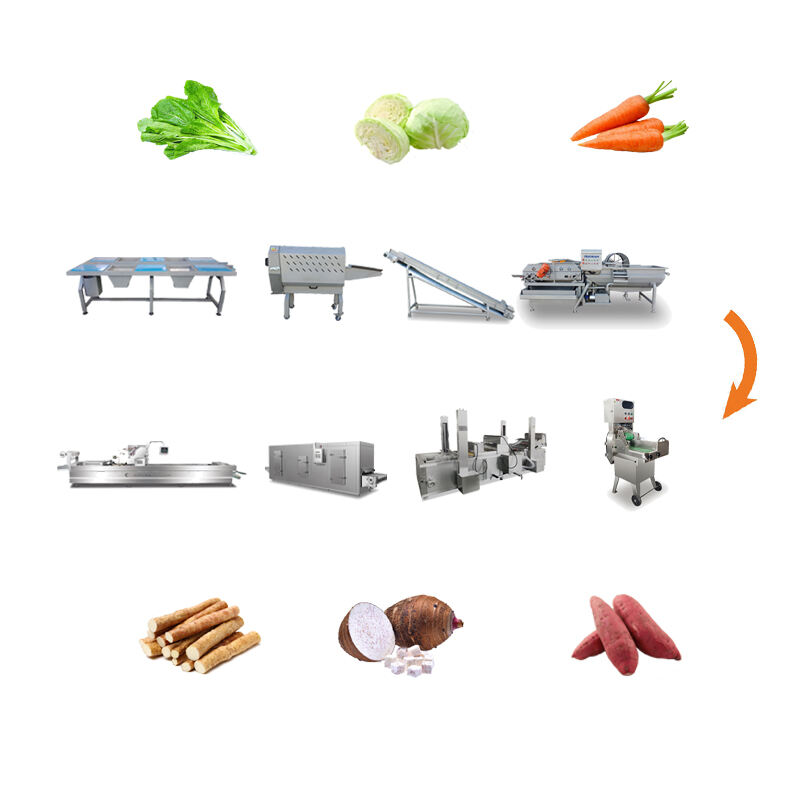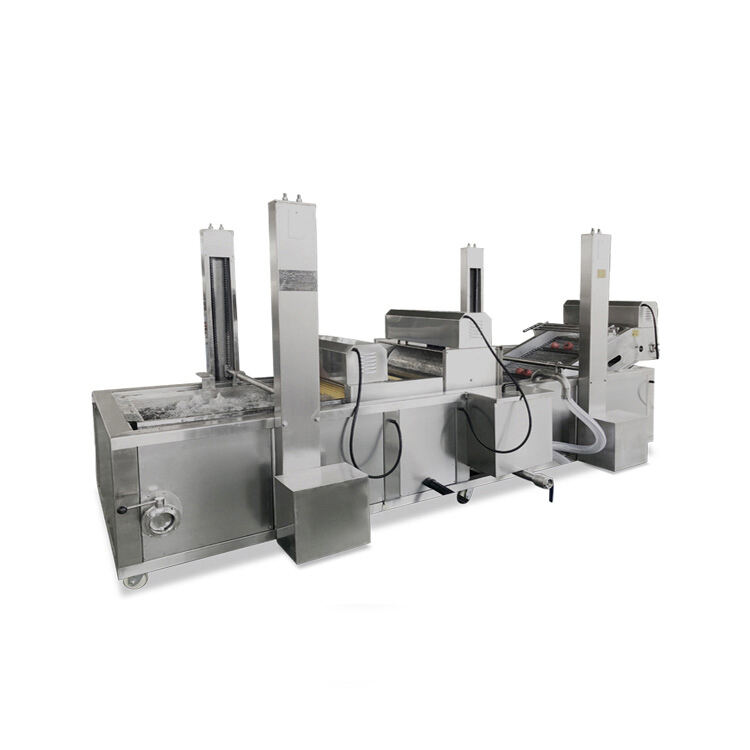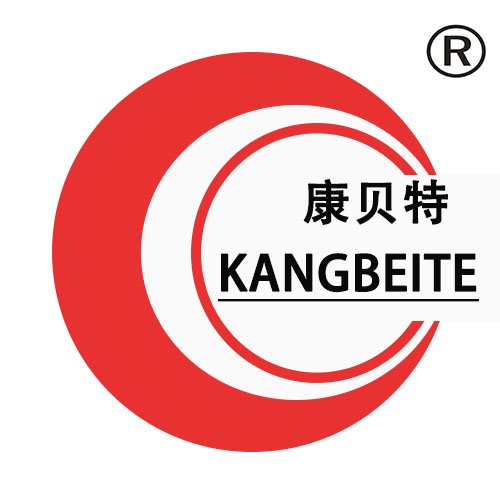फलफूल र तरकारी धुने नयाँ मेसिनहरूले खाद्य प्रसंस्करण प्रविधिमा महत्वपूर्ण प्रगति प्रतिनिधित्व गर्दछ, जसले सफाई दक्षता बढाउन, पानीको खपत घटाउन, खाद्य सुरक्षा सुधार गर्न र आधुनिक खाद्य व्यवसायहरूको विविध आवश्यकताहरू अनुकूलन गर्नका लागि नवीन सुविधाहरू एकीकृत गर्दछ। परम्परागत वाशरहरू भन्दा फरक छ जुन आधारभूत पानी स्प्रेइ or वा भिजाउनेमा निर्भर गर्दछ, यी अत्याधुनिक मोडेलहरूले बहु-चरण सफाई प्रक्रियाहरू, स्मार्ट नियन्त्रणहरू, र पर्यावरणमैत्री प्रविधिहरू प्रयोग गर्दछन् जसले दूषित पदार्थहरू (कीटनाशक अवशेषहरू, फोहोर, ब्याक्टेरिया, र विदेशी क फलफूल र तरकारी धुने नयाँ मेसिनमा एउटा महत्वपूर्ण नवीनता बहु-चरण सफाई प्रणालीको प्रयोग हो, जसले गहन शुद्धिकरण सुनिश्चित गर्न विभिन्न सफाई विधिहरू संयोजन गर्दछ। उदाहरण को लागी, एक विशिष्ट बहु-चरण वाशर एक पूर्व-रिनसि stage चरण (कम दबाव पानी जेट को उपयोग गरेर ढीला फोहोर हटाउन) को साथ शुरू हुन सक्छ, त्यसपछि मुख्य सफाई चरण जुन या त अल्ट्रासोनिक टेक्नोलोजी (उत्पादन सतह र क्र्याकबाट माइक्रोस्कोपिक दूषित पदार्थ केही मोडेलहरूमा पनि एक सरसफाई चरण समावेश छ, खाद्य-सुरक्षित कीटाणुनाशकहरू (क्लोरिन डाइअक्साइड वा ओजोन जस्ता) वा यूवी-सी प्रकाश (जसले ब्याक्टेरियाहरूलाई रासायनिक अवशेषहरू नछोडेर मार्दछ) लाई नष्ट गर्न हानिकारक रोगजनकहरू जस्तै पानीको संरक्षण नयाँ वाशरहरूको अर्को प्रमुख फोकस हो, किनकि परम्परागत मोडेलहरूले प्रति घण्टा हजारौं लिटर पानी खपत गर्न सक्दछन्। आधुनिक वाशरहरूले यसलाई बन्द-लूप पानी रिसाइक्लि systems प्रणालीहरूको साथ सम्बोधन गर्दछ, जसले प्रयोग गरिएको पानी फिल्टर गर्दछ र उपचार गर्दछ (अवशेष फिल्टरहरू, सक्रिय कार्बन फिल्टरहरू, र यूवी कीटाणुशोधन मार्फत) यसलाई सफाई प्रक्रियामा पुनः प्रयोग गर्नु अघि पुरानो मोडेलहरूको तुलनामा 50० यसको अतिरिक्त, पानीको दबावको चर नियन्त्रणले अपरेटरहरूलाई उत्पादनको प्रकारको आधारमा पानी जेटको तीव्रता समायोजन गर्न अनुमति दिन्छः स्ट्रबेरी जस्ता नाजुक वस्तुहरूको लागि कम दबाव (ब्रिजिंग रोक्न) र आलु जस्ता बलियो तरकारीहरूको लागि उच्च दबाव (गहिरो सफाई सुनिश्चित गर्दै) । स्मार्ट टेक्नोलोजी पनि नवीनतम फल र तरकारी वाशरहरूमा एकीकृत गरिएको छ, पीएलसी (प्रोग्राम योग्य तर्क नियन्त्रणकर्ता) प्रणालीहरू र टचस्क्रिन इन्टरफेसहरू जसले स्वचालित अपरेशन र वास्तविक समय अनुगमन सक्षम गर्दछ। अपरेटरहरूले विभिन्न उत्पादन प्रकारका लागि सफाई प्यारामिटरहरू (पानीको तापक्रम, दबाव, सफाई समय) पूर्व-प्रोग्राम गर्न सक्दछन्, स्थिरता सुनिश्चित गर्दै र मानव त्रुटिको जोखिम कम गर्दै। धेरै मोडेलहरूमा सेन्सरहरू पनि समावेश छन् जसले धुने उत्पादनको मात्रा पत्ता लगाउँदछ, स्वचालित रूपमा पानी र ऊर्जा खपत समायोजन गर्दछ दक्षता अनुकूलन गर्न। औद्योगिक अनुप्रयोगहरूको लागि, नवीनतम वाशरहरू उच्च मात्रामा प्रशोधनको लागि डिजाइन गरिएको छ (१००० किलोग्राम / घन्टा देखि १०,००० किलोग्राम / घन्टा सम्मको क्षमताको साथ) र स्वचालित कन्वेयरहरू मार्फत अपस्ट्रीम (हार्ने, क्रमबद्ध) र डाउनस्ट्रीम (कटिंग, सुख तिनीहरूसँग टिकाऊपन र सजिलो सफाईको लागि बलियो निर्माण (खाद्य ग्रेड स्टेनलेस स्टील) छ, चिल्लो सतह र हटाउन योग्य कम्पोनेन्टहरू छन् जसले सेनिटाइजेशनलाई सजिलो बनाउँछ HACCP र ISO 22000 मापदण्डहरू अनुरूप। साना-ठूला व्यवसायका लागि कम्प्याक्ट, मोबाइल मोडेलहरू उपलब्ध छन्, जसमा प्रयोगकर्ता-अनुकूल नियन्त्रण र कम उर्जा खपत छ, जसले तिनीहरूलाई फार्ममा सफाई वा साना खुद्रा अपरेसनहरूको लागि उपयुक्त बनाउँछ। अर्को उल्लेखनीय प्रगति उत्पादनको गुणस्तर संरक्षणमा ध्यान केन्द्रित गर्नु होः पछिल्लो वाशरले मेकानिकल तनावलाई कम गर्ने, चोटपटक कम गर्ने र उत्पादनको शेल्फ जीवन बढाउने कोमल सफाई विधिहरू प्रयोग गर्दछ। केही मोडेलहरूमा पनि सुकाउने चरण (कम-दबाव हावा ब्लोअरहरू प्रयोग गरेर) अतिरिक्त आर्द्रता हटाउन, जसले भण्डारण र यातायातको समयमा मोल्डको विकासलाई रोक्दछ। सारांशमा, पछिल्लो फल र तरकारी धुने मेसिनहरू दक्षता, स्थिरता, र खाद्य सुरक्षा सन्तुलनमा राख्ने डिजाइन गरिएको छ, खाद्य व्यवसायहरूलाई एक उपकरण प्रदान गर्दछ जुन केवल नियामक आवश्यकताहरू पूरा गर्दैन तर अपरेशनल लागत पनि कम गर्दछ, वातावरणीय प्रभावलाई न्यूनतम गर्दछ, र उपभोक्ताहरूलाई उच्च गुणस्तरको, स्वच्छ उत्पादनहरू




अधिकार © 2025 शांडोंग कैंगबेटे फूड पैकेजिंग मशीन कम्पनी, लिमिटेड. गोपनीयता नीति